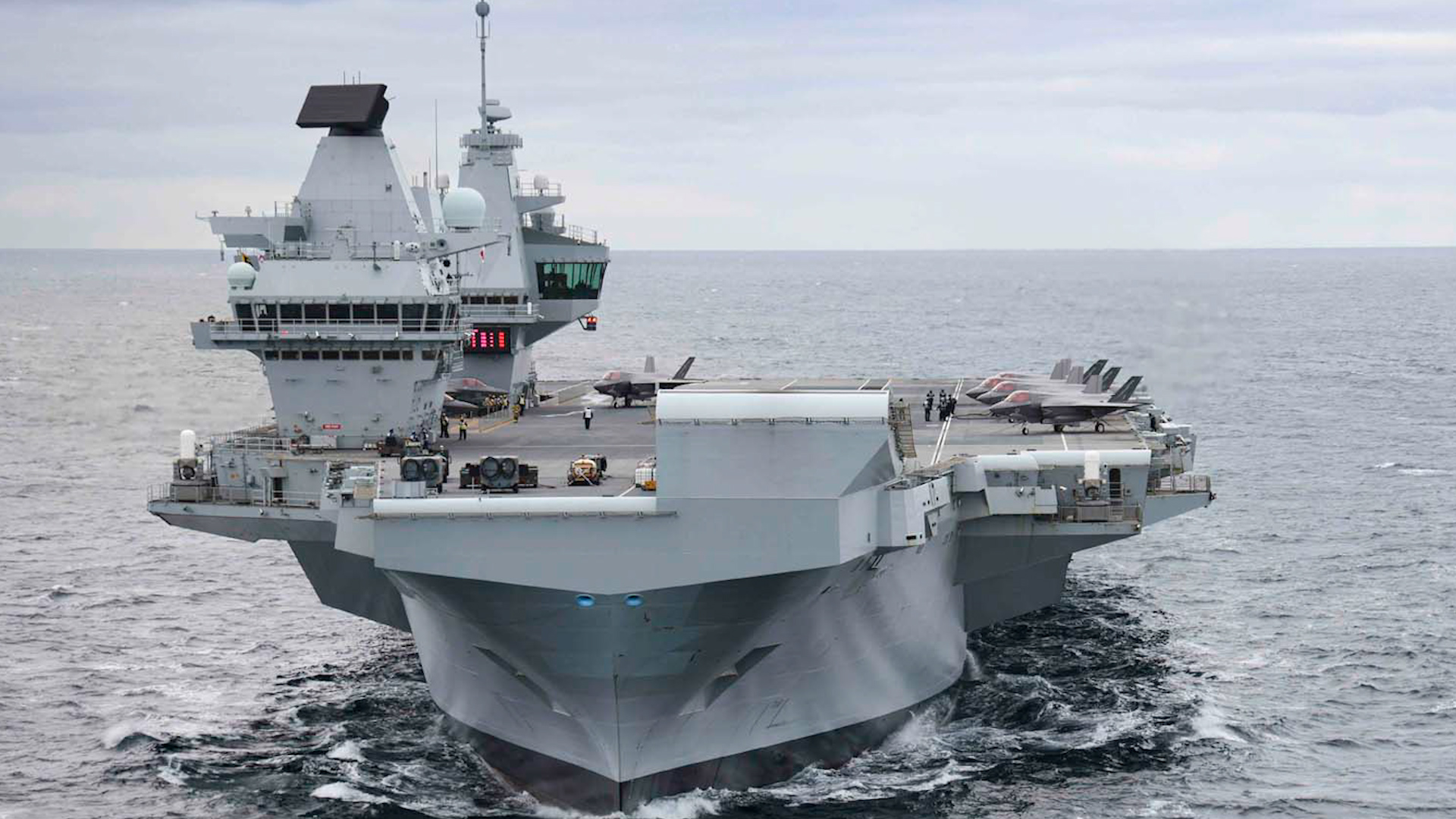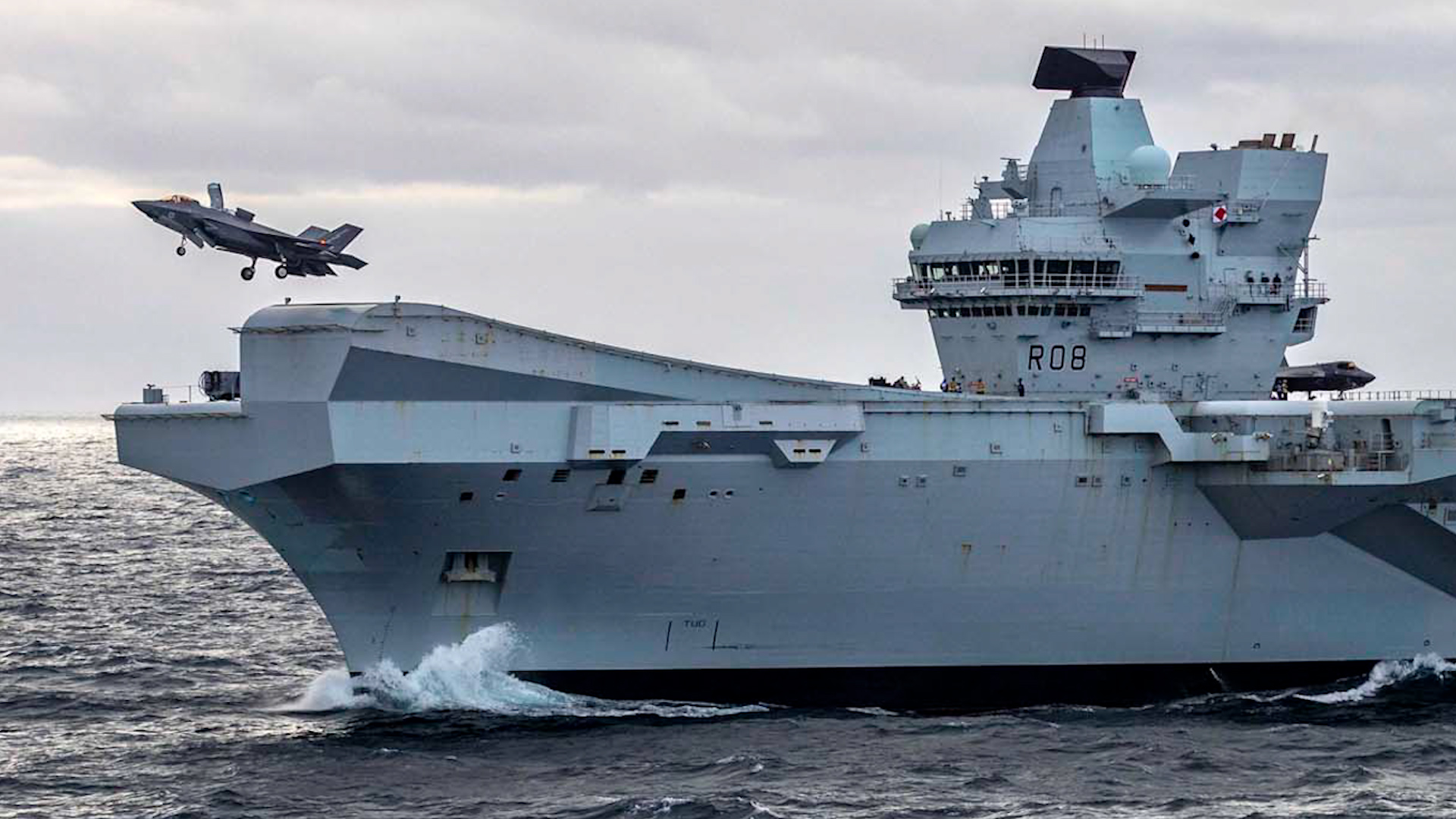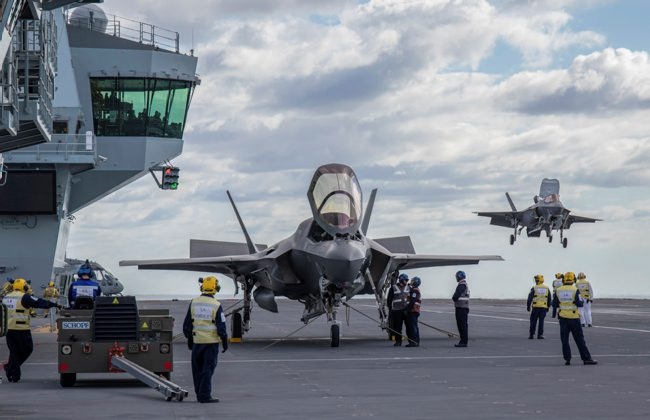
HMS Queen Elizabeth: All you need to know about the mighty aircraft carrier

Alongside HMS Prince of Wales, HMS Queen Elizabeth is the most powerful vessel ever constructed for the Royal Navy.
Commissioned in 2017, she is the lead ship of the Queen Elizabeth class of aircraft carriers and the fleet flagship of the Royal Navy.
Operated on a crew of 679, the 65,000-tonne warship has a range of 10,000 nautical miles and can carry up to 72 aircraft.
In February, a problem with the HMS Queen Elizabeth's propeller shaft forced her to withdraw from Exercise Steadfast Defender – Nato's biggest exercise since the Cold War.
Sister ship HMS Prince of Wales stood in for her on the multi-national exercise while she underwent repairs at Rosyth Dockyard.
Her first operational deployment was in 2021 when she led a task group on a seven-month journey of 55,000 nautical miles, stretching from the Eastern Atlantic to Japan and back.
Joining HMS Queen Elizabeth for United Kingdom Carrier Strike Group 21 (CSG21) were six frigates and destroyers, two Royal Fleet Auxiliary support ships, an Astute-class submarine, 18 F-35 fighter jets and 14 naval helicopters.
In November 2021, during the final month of her deployment, a UK F-35 jet ditched into the sea on take-off from her deck in the Eastern Mediterranean.
The Royal Navy fighter pilot ejected safely but the £100m jet was lost.

On Exercise Neptune Strike last autumn, HMS Queen Elizabeth operated under Nato command for the very first time.
During a mock game of cat-and-mouse with a Norwegian submarine playing the aggressor in the North Sea, she was under the command and control of Nato's Naval and Striking Support Forces.
The key numbers:
- The project to build HMS Queen Elizabeth and sister ship HMS Prince of Wales cost more than £6bn.
- The aircraft carrier weighs 65,000 tonnes and has a top speed of 25 knots.
- She can carry up to 72 aircraft, with a maximum capacity of 36 F-35B fighter jets. It is more likely the Queen Elizabeth-class carriers will have up to 24 Lightning jets on board for operations, however.
- Her flight deck is 280m long and 70m wide – enough space for three football pitches.
- The ship is the second in the Royal Navy to be named Queen Elizabeth.
- The ship has a crew of about 700, increasing to 1,600 when a full complement of F-35B jets and Crowsnest helicopters are embarked.
- There are 364,000m of pipes inside the ship.
- Both HMS Queen Elizabeth and HMS Prince of Wales will keep 45 days' worth of food in their stores.
- The entire ship's company of 700 can be served a meal within 90 minutes – 45 minutes when at action stations.

The history of British aircraft carriers
The Royal Navy has seen 16 different classes of aircraft carriers take to the sea since 1918, with between one and 10 ships commissioned for each class.
The engines of previous carriers were powered by boilers and geared turbines.
The first class of aircraft carrier was HMS Argus. It was laid down in 1914, and finally commissioned in 1918, and could carry 18 aircraft.
The Glorious class could carry 36 to 48 aircraft. Glorious, Courageous, and Furious, were commissioned between 1916 and 1917.
British carriers did not take on the modern look, with a control tower protruding above the flight deck, until HMS Eagle was commissioned as the only ship in her class in 1924.
Two squadrons of Lightning aircraft embarked on HMS Queen Elizabeth last year – the largest group of aircraft on a Royal Navy carrier since HMS Hermes was in service.









